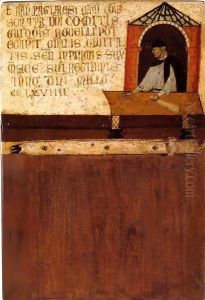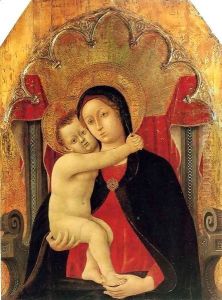Dietisalvi di Speme Paintings
Dietisalvi di Speme was an Italian painter whose life details are scant but whose work signifies a pivotal transition in Sienese art from the Byzantine style to more naturalistic representations that would characterize the Sienese School. There are no records of his exact birth and death dates, but he is known to have been active between 1255 and 1291, a period during which he created several significant works that have been attributed to him on the basis of style.
Dietisalvi's work is essential for understanding the development of early Italian painting. He is believed to have been a contemporary of Cimabue and Duccio, who were major figures in the shift towards a more naturalistic approach in art. Although Dietisalvi's work retains many Byzantine elements, such as the use of gold leaf and hierarchical proportions, there is a softness to his figures and a narrative quality to his scenes that suggest an artist working at the cusp of significant change in Italian painting.
One of Dietisalvi's most notable works is the 'Virgin and Child Enthroned', which is of particular interest because it shows a stylistic transition. The Madonna's features are tender and more rounded compared to the stark figures of Byzantine icons, suggesting a move towards the naturalistic depiction of space and form. Another significant work attributed to him is a signed panel of 'Saint Paul', which offers important insights into the stylistic developments of the period.
While the details of Dietisalvi di Speme’s life remain largely unknown, his contributions to the evolution of Sienese art are recognized and celebrated. His works are an important reference for the understanding of the progression from medieval to Renaissance art in Italy. Due to the lack of documentation, much of what is understood about his life and career comes through the study of his surviving paintings and those of his Sienese contemporaries.

